Calcworkshop

Special Parallelograms Expertly Defined w/ 14 Examples For Clarity!
// Last Updated: January 21, 2020 - Watch Video //
Did you know that there are 3 types of special parallelograms?

Jenn, Founder Calcworkshop ® , 15+ Years Experience (Licensed & Certified Teacher)
It’s true!
And in today’s geometry class , we’re going to dive deep into Rectangles, Rhombi, and Squares!
Here we go!
Okay, so have you ever speculated about the difference between a rectangle and a square?
Or wondered about what really is a rhombus?
These words are used by teachers all the time, and we’ve gotten used to hearing them, but what do they really mean and how can we tell the difference between these special quadrilaterals?
Together we are going to put our knowledge to the test, and discover some amazing properties about these three special parallelograms.
Types of Special Parallelograms
First, it is important to note that rectangles, squares, and rhombi (plural for rhombus) are all quadrilaterals that have all the properties of parallelograms.
The biggest distinguishing characteristics deal with their four sides and four angles. A rectangle is a parallelogram with four right angles. A rhombus , which is sometimes called a rhomb or diamond, as Math is Fun nicely states, is a parallelogram with four congruent sides. And a square is a parallelogram with four right angles and four congruent sides.
But there’s more! Let’s take a look at each of their properties closely.
Properties of a square
- All four sides are congruent.
- All four are right angles.
- Diagonals bisect each other.
- Diagonals are perpendicular.
- Diagonals bisect vertices.
- Diagonals are congruent.
- Consecutive angles are supplementary.
Properties of a rhombus
- Opposite angles are congruent.
- Diagonals are NOT congruent.
Properties of a rectangle
- Opposite sides are congruent.
Here are some common questions that students have when working on this material.
Q: What is the difference between a rhombus and a parallelogram? A: For a rhombus we are quaranteed that all the sides have the same length, while a parallelogram only specifies that opposite sides are congruent
Q: What is the difference between a square and a rhombus? A: A square and a rhombus both have four congruent sides, but a square also has four congruent right angles, whereas a rhombus only specifies that opposite angles are congruent and they do not need to be 90 degrees.
Q: Why is a square a rectangle? A: A square is a rectangle because it fulfills all the properties of a rectangle. Remember, for a parallelogram to be a rectangle is must have four right angles, opposite sides congruent, opposite sides parallel, opposite angles congruent, diagonals bisect each other, and diagonals are congruent. A square satisfies all of these requirements, therefore a square is always a rectangle.
Q: When is a rhombus a rectangle? A: A rhombus can be a rectangle only if all four angles of the rhombus are 90 degrees.

Properties Of Special Parallelograms
Together we will look at various examples where we will use our properties of rectangles, rhombi, and squares, as well as our knowledge of angle pair relationships, to determine missing angles and side lengths.
Additionally, we will draw upon our understanding of Isosceles, Equilateral and Right Triangles to find indicated measures as well as the perimeter of a given polygon.
Special Parallelograms – Lesson & Examples (Video)
- What are special parallelograms?
- 00:00:21 – How to classify a rhombus, rectangle, and square?
- 00:08:02 – True or False questions: Properties of rectangles, rhombi, and squares (Examples #1-9)
- Exclusive Content for Member’s Only
- 00:15:05 – Given a rhombus, find the missing angles and sides (Example #10)
- 00:23:12 – Given a rectangle, find the indicated angles and sides (Example #11)
- 00:32:38 – Given a square, find the missing sides and angles (Example #12)
- 00:37:48 – Use the properties of a rectangle to find the unknown angles (Example #13)
- 00:41:13 – Use the properties of a rhombus to find the perimeter (Example #14)
- Practice Problems with Step-by-Step Solutions
- Chapter Tests with Video Solutions
Get access to all the courses and over 450 HD videos with your subscription
Monthly and Yearly Plans Available
Get My Subscription Now
Still wondering if CalcWorkshop is right for you? Take a Tour and find out how a membership can take the struggle out of learning math.


- Parallelogram
- Quadrilateral
- Parallelepiped
- Tetrahedron
- Dodecahedron
- Fraction Calculator
- Mixed Fraction Calculator
- Greatest Common Factor Calulator
- Decimal to Fraction Calculator
- Whole Numbers
- Rational Numbers
- Place Value
- Irrational Numbers
- Natural Numbers
- Binary Operation
- Numerator and Denominator
- Order of Operations (PEMDAS)
- Scientific Notation
Table of Contents
Last modified on April 25th, 2024
#ezw_tco-2 .ez-toc-title{ font-size: 120%; ; ; } #ezw_tco-2 .ez-toc-widget-container ul.ez-toc-list li.active{ background-color: #ededed; } chapter outline
Special parallelograms.
A parallelogram is a plane figure with two pairs of opposite sides. The opposite sides are parallel and equal, and the opposite angles are of equal measure. Parallelograms can be equilateral, equiangular, or both. There are three special types of parallelograms— rectangle, rhombus, and square. They are special because, in addition to the general properties of a parallelogram that they show, they have their unique properties. The unique properties are as follows:
- A rectangle has four right angles. So it is equiangular (with all angles equal)
- A rhombus has four congruent sides. So it is equilateral (all sides equal)
- A square has four right angles and four congruent sides. So a square is equilateral and equiangular.
Now let us take a look at each of their properties closely.
Let us consider each of the properties of special parallelograms in the following segments.
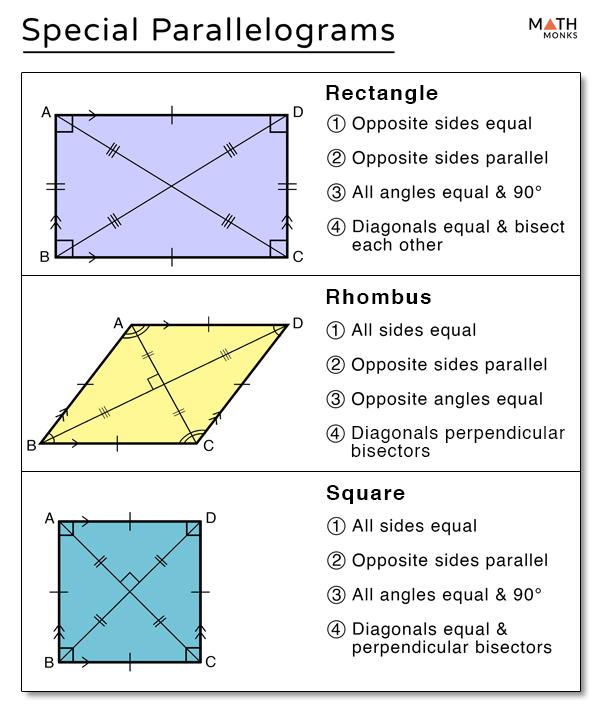
A rectangle is a plane figure with four straight sides making four right internal angles.
- Has four sides and four angles; in ▭ ABCD, AB, BC, CD, and DA are four sides and ∠ABC, ∠BCD, ∠CDA, ∠DAB are four angles
- Opposite sides are equal; so AB = CD and BC= DA
- Opposite sides are parallel; AB ∥ CD and BC ∥ DA
- All the angles are 90°; in ▭ ABCD, ∠ABC = ∠BCD = ∠CDA =∠DAB = 90°
- The diagonals are equal and bisect each other; so AC = BD
- The sum of the interior angles is equal to 360 degrees; ∠ABC + ∠BCD + ∠CDA + ∠DAB = 360°
- All four sides are equal; in rhombus ABCD, AB = BC = CD = DA
- Opposite sides are parallel; so AB ∥ CD and BC ∥ DA
- Opposite angles are equal; ∠DAB = ∠BCD and ∠ABC = ∠CDA
- Two diagonals are perpendicular bisectors; so AC ⊥ BD
- Adjacent angles add up 180° (supplementary); so ∠DAB +∠ABC = 180°, ∠ABC + ∠BCD = 180°, ∠BCD + ∠CDA = 180°, and ∠CDA + ∠DAB = 180°
- All four interior angles are right angles; in □ ABCD, ∠ABC = ∠BCD = ∠CDA =∠DAB = 90°
- Has four vertices and four sides; A, B, C and D are vertices and AB, BC, CD and DA are sides
- All four sides are congruent; so AB ≅ BC ≅ CD ≅DA
- Opposite sides are parallel to each other; AB ∥ CD and BC ∥ DA
- Diagonals are equal and perpendicular bisectors; so AC = BD & AC ⊥ BD
| (A) | , here w = width & l = length, | × d ) , here d and d are the diagonals of rhombus | ,here a = side |
| , here s = side | |||
| + l ) | ______ |
Let us solve some examples to understand the concept better
Solved Examples
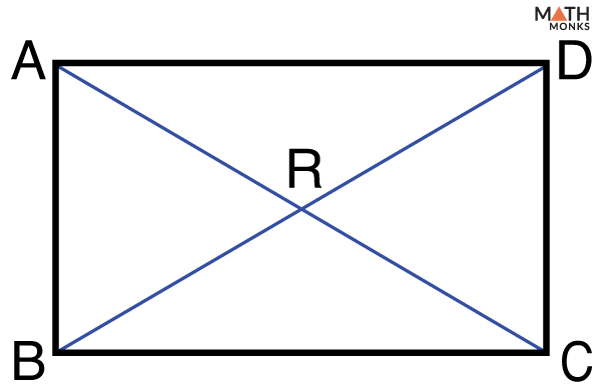
As we know, In rectangle, diagonals bisect each other AR = CR, here AR = 2x – 4 and CR = x + 12 2x – 4 = x + 12 (substituting values of AR & CR) x = 16 Using either of the given equations to determine BD since each half of the diagonals are equal BD = 26 units
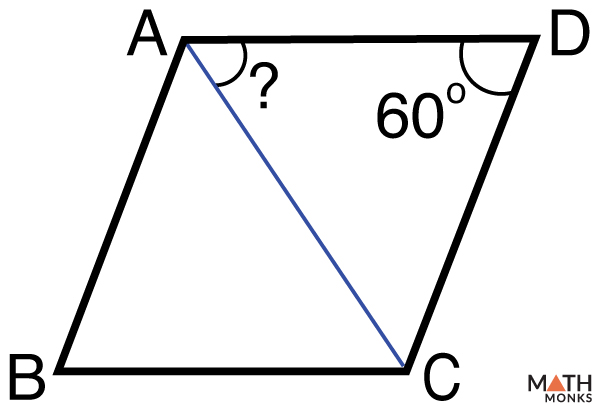
As we know, In a rhombus, opposite angles are equal, ∴ ∠ABC = 60° Consecutive angles are supplementary ∴ ∠BAD = (180 – 60)° = 120° Diagonals are angle bisector ∴ ∠CAD = (120/2)° = 60°
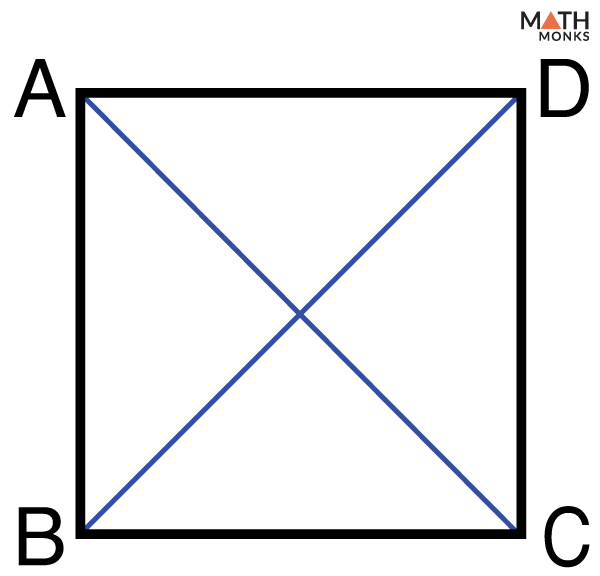
As we know, Diagonals of a square are congruent, ∴ Statement 1: The length of AC is equal to the length of BD is True As we know, Diagonals of a square always bisect each other at right angles ∴ Statement 2: The diagonals AC and BD bisect each other at right angles is True As we know, Perimeter of square is 4a, if any side is ‘a’ units ∴ Statement 3: The perimeter of the above square could be given as 4CD is True
Leave a comment Cancel reply
Your email address will not be published. Required fields are marked *
Save my name, email, and website in this browser for the next time I comment.
- Privacy Policy
- Trigonometry
Join Our Newsletter
© 2024 Mathmonks.com . All rights reserved. Reproduction in whole or in part without permission is prohibited.

Squares, Rectangles, and Rhombuses
Properties of parallelograms.
Remember that a parallelogram has four sides, consisting of two pair that are parallel to each other. A parallelogram may be equiangular (four identical angles), equilateral (four identical side lengths), or both equiangular and equilateral. An example of a special parallelogram that is both equiangular and equilateral is the square.
A rectangle is a parallelogram with 4 right angles. A rectangle has the following rules:
(1) All the rules of a parallelogram.
(2) Four right angles. Remember that a right angle measures 90 degrees.
(3) Diagonals which are congruent (they have the same length).
The picture of rectangle ABCD below shows all three rules listed above.
In rectangle ABCD below, diagonals AC and BD intersect at point R. If AR = 2x - 6 and CR = x + 10, find BD.
Since the diagonals of a rectangle bisect each other, we can say that AR = CR.
We equate the values of AR and CR and solve for x.
2x - 6 = x + 10 2x - x = 10 + 6 x = 16
Use either of the given equations to determine that each segment equals 26. Since they are all equal, BD = 26.
A rhombus is a parallelogram with 4 congruent or equal sides. A rhombus has the following rules:
(2) Four sides that have the same length.
(3) Diagonals that intersect at right angles.
(4) Diagonals that bisect opposite pairs of angles.
Given that ABCD is a rhombus and the measure of angle D = 60 degrees, find the measure of angles A and B.
Triangle ABC is isosceles since line segment AB is congruent to line segment BC. Then we can say that the base angles of triangle ABC must be congruent or equal. Since we know the diagonal bisects the angles A and C, we must have two congruent triangles here. If so, then the measure of angle D = the measure of angle B = 60 degrees.
In triangle AEB, angle AEB is a right triangle because the diagonals of a rhombus are perpendicular to each other. Since the sum of the degree measures of the angles of a triangle is 180 degrees, we can say that the measure of angle A must be 30 degrees. How do we get 30?
Measure of angle A = 180 - 90 degrees - 60 degrees
Measure of angle A = 30 degrees
A square is a parallelogram with 4 right angles and 4 sides that have the same length. A square has all the rules of a rectangle and a rhombus as shown in square ABCD below.
In square ABCD, AB = x + 4. What is the perimeter of square ABCD?
A square has the same length on all 4 sides.
We can use the formula P = side times 4, or P = 4s, where P = perimeter and s = side of square.
P = 4s P = 4(x + 4)....We apply the distributive rule here and get P = 4x + 16
Our perimeter is 4x + 16.
Lesson provided by Mr. Feliz
Special Parallelograms: Rhombus, Square & Rectangle
A parallelogram is a quadrilateral in which the opposite sides are parallel and equal, and the opposite angles are of equal measure. Parallelograms can be equilateral (with all sides of equal length), equiangular (with all angles of equal measure), or, both equilateral and equiangular. Let us learn more about the three special parallelograms: rhombus, square, and rectangle along with their properties.
| 1. | |
| 2. | |
| 3. | |
What are Parallelograms?
A parallelogram is a two-dimensional quadrilateral with two pairs of parallel sides. The opposite angles and opposite sides of a parallelogram are congruent and the sum of its interior angles is 360°.
Relationship Between Various Quadrilaterals and Parallelograms
Quadrilaterals like rhombi (plural for rhombus), squares, and rectangles have all the properties of a parallelogram. Observe the following figure which shows the relationship between various quadrilaterals and parallelograms.

If we observe the figure shown above, we understand that:
- Every square is a rectangle.
- Every square is a rhombus.
- Every rhombus, square and rectangle is a parallelogram.
- All parallelograms are quadrilaterals.
Now, let us learn about some special parallelograms.
Special Parallelograms
A rhombus, a rectangle, and a square are special parallelograms because they not only show the properties of a parallelogram but also have unique properties of their own. Let us have a look at the unique features of special parallelograms.
- A rhombus , which is also called a diamond, is a special parallelogram with four congruent sides.
- A rectangle is a special parallelogram in which all four angles are equal to 9 0°.
- A square is a special parallelogram that is both equilateral and equiangular.
Properties of Special Parallelograms
Each special parallelogram has specific properties of its o wn. Let us learn about each of them in this section.
A rhombus is a two-dimensional quadrilateral in which all the sides are equal and the opposite sides are parallel. It is a parallelogram whose diagonals are perpendicular to each other. Some of the real-life examples of a rhombus are kite, diamond, etc.
Observe the rhombus ABCD and note the properties listed below:
- All sides are congruent. Side AB = BC = CD = DA
- Opposite angles are congruent. Angles ∠A = ∠C and ∠B = ∠D
- The diagonals AC and BD bisect each other at right angles.
- Adjacent angles in a rhombus are supplementary (For example, ∠A + ∠B = 180°).

A square is a two-dimensional quadrilateral with four equal sides and four equal angles. It is a special parallelogram in which all angles and sides are equal. Some of the real-life examples of a square are a slice of bread, chessboard etc.
Observe the square GDEF and note the properties listed below:
- All sides are congruent. Sides GF = FE = ED = DG
- All the angles are 90°. Angles ∠G = ∠F = ∠E = ∠D = 90°.
- The opposite sides are parallel to each other. GF || DE and GD || FE
- The diagonals are congruent. Diagonals GE = FD
- The diagonals GE and FD bisect each other at right angles.

A rectangle is a two-dimensional quadrilateral in which the opposite sides are equal and parallel and all its angles are equal. Some of the real-life examples of a rectangle are books, mobile phones, etc.
Observe the rectangle MNOP and note the properties listed below:
- The opposite sides are parallel. MN || PO and MP || NO
- The opposite sides are congruent. MN = PO and MP = NO
- All angles are right angles. ∠M = ∠N = ∠O = ∠P = 90°
- The diagonals MO and PN are congruent and bisect each other.

Summary of the Properties
The following table shows a summary and a comparison of the properties of special parallelograms: rhombus, square & rectangle.

Related Topics
Check out these interesting articles to learn more about the properties of special parallelograms and their related topics
- Types of Triangles
- Properties of Triangle
- What are the Properties of a Parallelogram?
- Properties of Rectangle
Important Notes
Here is a list of a few points that should be remembered while studying about parallelograms:
- A quadrilateral is a four-sided two-dimensional figure whose interior angles sum up to 360°.
- A parallelogram can be defined as a quadrilateral with four sides in which two sides are parallel to each other.
- A square is a special parallelogram that is both equilateral and equiangular and with diagonals perpendicular to each other.
- A rectangle is a special parallelogram whose opposite sides are congruent and each angle is equal to 9 0°.
- A rhombus, which is also called a diamond, is a special parallelogram with four congruent sides with diagonals perpendicular to each other.
Solved Examples
Example 1: In the given rectangle EFGH, diagonals EG and FH intersect at point O. If EO = 16 units, then find FH.

As per the properties of a rectangle, the diagonals of a rectangle bisect each other. Hence, we can say that EO = GO.
Since the diagonals are congruent, EG = FH
EO = 16, and GO = 16
EG = EO + OG EG = 16 + 16
Since EG = FH
Therefore, FH = 32 units.
Example 2: For square PQRS, state whether the following statements are true or false.

- The length of PR is equal to the length of SQ.
- The diagonals PR and SQ bisect each other at right angles.
- The perimeter of the above square could be given as 4SR.
1. The length of PR equal the length of SQ - True
Reason: Diagonals of a square are congruent.
2. The diagonals PR and SQ bisect each other at right angles - True
Reason: Diagonals of a square always bisect each other at right angles.
3. The perimeter of the above square could be given as 4SR - True
Reason: All sides of a square are congruent. Perimeter is defined as the sum of all the sides of a closed figure. For square PQRS, perimeter = PQ + QR + RS + SP. Since all the four sides in a square are congruent, PQ = QR = RS = SP, the perimeter could be given as four times of any one side of the square, say SR. Thus, the perimeter of the above square could be given as 4SR.
go to slide go to slide

Book a Free Trial Class
Practice Questions
go to slide go to slide go to slide
FAQs on Special Parallelograms: Rhombus, Square & Rectangle
What is the difference between a parallelogram, a square, and a rhombus.
The following points show the basic difference between a parallelogram, a square, and a rhombus:
- In a parallelogram, the opposite sides are parallel and equal.
- In a rhombus, all four sides are of the same length and its opposite sides are parallel.
- In a square, all four sides are of the same length and all angles are equal to 90°.
When Can a Rhombus Become a Rectangle?
A rhombus can become a rectangle only if all four angles of the rhombus are 9 0°.
What Is the Sum of the Interior Angles of a Quadrilateral?
The sum of the interior angles of a quadrilateral is equal to 360°.
Which Parallelogram Is Both a Rectangle and a Rhombus?
If a parallelogram is both a rectangle and a rhombus, then all its sides should be equal and all its angles should be equal to 90°. This holds true for a square.Therefore, a square can be a rectangle and a rhombus.
Name 3 Special Parallelograms.
The 3 special parallelograms are rectangle, square, and rhombus.
What Are the Different Types of Quadrilaterals?
The different types of quadrilaterals are– parallelogram, trapezium or trapezoid, rectangle, square, kite, and rhombus.
Is Every Rectangle a Parallelogram?
Yes, every rectangle is a parallelogram since the opposite sides of rectangles are parallel and equal.
Want Better Math Grades?
✅ Unlimited Solutions
✅ Step-by-Step Answers
✅ Available 24/7
➕ Free Bonuses ($1085 value!)
On this page
- Introduction to Geometry
- Functions and Graphs
- 1. Introduction to Functions
- 2. Functions from Verbal Statements
- 3. Rectangular Coordinates
- 4. The Graph of a Function
- 4a. Domain and Range of a Function
- 4b. Domain and Range interactive applet
- 4c. Comparison calculator BMI - BAI
- 5. Graphing Using a Computer Algebra System
- 5a. Online graphing calculator (1): Plot your own graph (JSXGraph)
- 5b. Online graphing calculator (2): Plot your own graph (SVG)
- 6. Graphs of Functions Defined by Tables of Data
- 7. Continuous and Discontinuous Functions
- 8. Split Functions
- 9. Even and Odd Functions
Related Sections
Math Tutoring
Need help? Chat with a tutor anytime, 24/7.
Online Math Solver
Solve your math problem step by step!
IntMath Forum
Get help with your math queries:
Understanding Special Parallelograms in Geometry
In geometry, a parallelogram is a two-dimensional figure that has two sets of parallel sides and four right angles. While the basic definition of a parallelogram remains the same, there are many different types of special parallelograms that have additional properties and characteristics. Let's take a look at the different types of special parallelograms and examine their properties.
Rectangle
A rectangle is arguably the most common type of parallelogram. It is composed of four sides, with two pairs of parallel lines and four 90 degree angles. All rectangles have an area of length times width, and its opposite sides are equal in length as well as parallel to each other.
Rhombus
A rhombus is a type of parallelogram where all four sides are equal in length. This makes it easy to recognize because it looks like a diamond shape when viewed from above or below. Rhombuses also have diagonals that bisect each other at right angles, meaning they form two congruent triangles within the figure itself.
Square
Squares are special types of rectangles where all sides are equal in length, making them both rectangles and rhombuses at once! A square's area can be calculated by multiplying any side by itself since all sides are the same size (length x width = side x side). Additionally, similar to rhombuses, squares also have diagonals that bisect each other at right angles, forming two congruent triangles within the figure itself.
Trapezoid
A trapezoid is composed of one pair of parallel lines with two non-parallel lines on either side. Trapezoids can be classified further based on how many sides are congruent; if only one pair of non-parallel lines is congruent then it's known as an Isosceles Trapezoid, while if neither pair is congruent then it's known as an Irregular Trapezoid. The area for trapezoids can be calculated using the formula 1/2 * h * (b1 + b2) where h represents the height and b1 & b2 represent either base line respectively.
Every geometric figure has specific characteristics which make them unique — those characteristics help us to identify which type of geometric figure we're dealing with when solving problems or completing assignments related to geometry! Special parallelograms such as rectangles, rhombuses, squares and trapezoids all have distinct properties which make them stand out from regular parallelograms — understanding these properties will allow students to distinguish between different geometric figures more easily when working on math problems related to shapes!
Types of quadrilaterals
The four types of quadrilaterals are: rectangle, rhombus, square, and trapezoid.
What is a special parallelogram Class 8?
A special parallelogram is a two-dimensional figure that has two sets of parallel sides and four right angles. The four types of special parallelograms are rectangle, rhombus, square, and trapezoid.
What are the 8 types of quadrilaterals?
The eight types of quadrilaterals are: rectangle, rhombus, square, trapezoid, parallelogram, kite, isosceles trapezoid, and irregular quadrilateral.

What shape is a special parallelogram?
A special parallelogram is a two-dimensional figure that has two sets of parallel sides and four right angles. The shape can be identified as rectangular, rhombus, square or trapezoid.
What are the 12 quadrilaterals?
The twelve quadrilaterals are: rectangle, rhombus, square, trapezoid, parallelogram, kite, isosceles trapezoid, irregular quadrilateral; regular hexagon; convex pentagon; concave pentagon; and convex quadrilateral.
How do you find the properties of special parallelograms?
The properties of special parallelograms depend on the type. Rectangles have two pairs of parallel lines and four 90 degree angles, with an area calculated by length times width. Rhombuses have all four sides equal in length, with diagonals that bisect at right angles to form two congruent triangles. Squares are rectangles with all sides of equal length, and trapezoids have one pair of parallel lines with two non-parallel lines on either side. The area for trapezoids can be calculated using the formula 1/2 * h * (b1 + b2) where h represents the height and b1 & b2 represent either base line respectively.
Tips, tricks, lessons, and tutoring to help reduce test anxiety and move to the top of the class.
Email Address Sign Up
- Precalculus
- Signup / Login

Properties of Special Parallelograms (Lesson 5.3)
Unit 1: reasoning in geometry, day 1: creating definitions, day 2: inductive reasoning, day 3: conditional statements, day 4: quiz 1.1 to 1.3, day 5: what is deductive reasoning, day 6: using deductive reasoning, day 7: visual reasoning, day 8: unit 1 review, day 9: unit 1 test, unit 2: building blocks of geometry, day 1: points, lines, segments, and rays, day 2: coordinate connection: midpoint, day 3: naming and classifying angles, day 4: vertical angles and linear pairs, day 5: quiz 2.1 to 2.4, day 6: angles on parallel lines, day 7: coordinate connection: parallel vs. perpendicular, day 8: coordinate connection: parallel vs. perpendicular, day 9: quiz 2.5 to 2.6, day 10: unit 2 review, day 11: unit 2 test, unit 3: congruence transformations, day 1: introduction to transformations, day 2: translations, day 3: reflections, day 4: rotations, day 5: quiz 3.1 to 3.4, day 6: compositions of transformations, day 7: compositions of transformations, day 8: definition of congruence, day 9: coordinate connection: transformations of equations, day 10: quiz 3.5 to 3.7, day 11: unit 3 review, day 12: unit 3 test, unit 4: triangles and proof, day 1: what makes a triangle, day 2: triangle properties, day 3: proving the exterior angle conjecture, day 4: angle side relationships in triangles, day 5: right triangles & pythagorean theorem, day 6: coordinate connection: distance, day 7: review 4.1-4.6, day 8: quiz 4.1to 4.6, day 9: establishing congruent parts in triangles, day 10: triangle congruence shortcuts, day 11: more triangle congruence shortcuts, day 12: more triangle congruence shortcuts, day 13: triangle congruence proofs, day 14: triangle congruence proofs, day 15: quiz 4.7 to 4.10, day 16: unit 4 review, day 17: unit 4 test, unit 5: quadrilaterals and other polygons, day 1: quadrilateral hierarchy, day 2: proving parallelogram properties, day 3: properties of special parallelograms, day 4: coordinate connection: quadrilaterals on the plane, day 5: review 5.1-5.4, day 6: quiz 5.1 to 5.4, day 7: areas of quadrilaterals, day 8: polygon interior and exterior angle sums, day 9: regular polygons and their areas, day 10: quiz 5.5 to 5.7, day 11: unit 5 review, day 12: unit 5 test, unit 6: similarity, day 1: dilations, scale factor, and similarity, day 2: coordinate connection: dilations on the plane, day 3: proving similar figures, day 4: quiz 6.1 to 6.3, day 5: triangle similarity shortcuts, day 6: proportional segments between parallel lines, day 7: area and perimeter of similar figures, day 8: quiz 6.4 to 6.6, day 9: unit 6 review, day 10: unit 6 test, unit 7: special right triangles & trigonometry, day 1: 45˚, 45˚, 90˚ triangles, day 2: 30˚, 60˚, 90˚ triangles, day 3: trigonometric ratios, day 4: using trig ratios to solve for missing sides, day 5: review 7.1-7.4, day 6: quiz 7.1 to 7.4, day 7: inverse trig ratios, day 8: applications of trigonometry, day 9: quiz 7.5 to 7.6, day 10: unit 7 review, day 11: unit 7 test, unit 8: circles, day 1: coordinate connection: equation of a circle, day 2: circle vocabulary, day 3: tangents to circles, day 4: chords and arcs, day 5: perpendicular bisectors of chords, day 6: inscribed angles and quadrilaterals, day 7: review 8.1-8.6, day 8: quiz 8.1 to 8.6, day 9: area and circumference of a circle, day 10: area of a sector, day 11: arc length, day 12: quiz 8.7 to 8.9, day 13: unit 8 review, day 14: unit 8 test, unit 9: surface area and volume, day 1: introducing volume with prisms and cylinders, day 2: surface area and volume of prisms and cylinders, day 3: volume of pyramids and cones, day 4: surface area of pyramids and cones, day 5: review 9.1-9.4, day 6: quiz 9.1 to 9.4, day 7: volume of spheres, day 8: surface area of spheres, day 9: problem solving with volume, day 10: volume of similar solids, day 11: quiz 9.5 to 9.8, day 12: unit 9 review, day 13: unit 9 test, unit 10: statistics and probability, day 1: categorical data and displays, day 2: measures of center for quantitative data, day 3: measures of spread for quantitative data, day 4: quiz review (10.1 to 10.3), day 5: quiz 10.1 to 10.3, day 6: scatterplots and line of best fit, day 7: predictions and residuals, day 8: models for nonlinear data, day 9: quiz review (10.4 to 10.6), day 10: quiz 10.4 to 10.6, day 11: probability models and rules, day 12: probability using two-way tables, day 13: probability using tree diagrams, day 14: quiz review (10.7 to 10.9), day 15: quiz 10.7 to 10.9, day 16: random sampling, day 17: margin of error, day 18: observational studies and experiments, day 19: random sample and random assignment, day 20: quiz review (10.10 to 10.13), day 21: quiz 10.10 to 10.13, learning targets.
Use congruent triangles to prove properties about the diagonals of rectangles, rhombi, and squares.
Solve for missing lengths and angle measures in special parallelograms.
| Tasks/Activity | Time |
|---|---|
| Activity Questions 1-3 | 10 minutes |
| Debrief Questions 1-3 with Margin Notes | 10 minutes |
| Activity Questions 4-6 | 15 minutes |
| QuickNotes | 5 minutes |
| Check Your Understanding | 10 minutes |
Activity: Special! Special!
Lesson handouts, media locked.

Our Teaching Philosophy:
Experience first, formalize later (effl), experience first.
First, students take note that squares, rectangles, and rhombi must all have the parallelogram properties. This ties together ideas from Lessons 5.1 and 5.2.
Next, students explore the properties of rectangles and rhombi by drawing their diagonals. Make sure to have students stop after question 3. The Notice and Wonder should surface many ideas about the quadrilateral properties without explicitly pointing them out with scaffolded questions. Bring the class together to share out the students’ noticings and wonderings and record them on a whiteboard or poster paper. Write down all things students say, even if they seem obvious or less mathematical. This is a way to honor student voice and lower the floor of the activity. As students hear from other groups, they will be pushed to think more deeply and make new connections.
Based on their observations, students will return to working in their groups to determine if the statements are true or false. In question 5, students should notice that a square must have all the properties of a rectangle and all the properties of a rhombus.
Finally, students will need some time to work on a proof for question 6. They should do this on a common workspace (preferably vertical) that will allow you to see the progress of many groups at once. You may let groups choose which of the true statements they want to prove or assign them, so each true statement gets covered by at least one group. Take note that some statements will be harder (longer) than others to prove.
Formalize Later
The focus of today’s lesson is again on the why of these properties, rather than just the what. We believe that students will be able to reason about the properties of each shape using their knowledge of triangle constraints and congruence shortcuts from Unit 4. It is less important that students can look at a list of properties and quickly check off which shapes they apply to, but instead understand how the constraints of a particular shape leave no other option but for the associated properties to hold. We think it’s okay for students to “rediscover” the properties of a rhombus, for example, each time they see one, by drawing the diagonals and looking for congruent triangles and corresponding parts.
Be prepared that students’ proofs may require multiple drafts. Specific feedback is necessary to hone students’ skills of giving statements and reasons in a logical order without leaving out any details.
Math Medic Help
Pardon Our Interruption
As you were browsing something about your browser made us think you were a bot. There are a few reasons this might happen:
- You've disabled JavaScript in your web browser.
- You're a power user moving through this website with super-human speed.
- You've disabled cookies in your web browser.
- A third-party browser plugin, such as Ghostery or NoScript, is preventing JavaScript from running. Additional information is available in this support article .
To regain access, please make sure that cookies and JavaScript are enabled before reloading the page.
Have an account?

Assignment 7.4 - Special Parallelograms
9th - 12th grade, mathematics.
29 questions

Introducing new Paper mode
No student devices needed. Know more
- 3. Multiple Choice Edit 30 seconds 1 pt In a rhombus, all four sides are ______________. congruent parallel perpendicular not congruent
- 4. Multiple Choice Edit 30 seconds 1 pt What does it mean if diagonals are perpendicular? They bisect the vertex. They form a 90° angle where they intersect. They are equal. They cross each other.
- 5. Multiple Choice Edit 30 seconds 1 pt True or False: All rhombuses are squares . True False
- 6. Multiple Choice Edit 30 seconds 1 pt True or False: All squares are parallelograms . True False
Classify the quadrilateral (give the most specific name)
Parallelogram
- 10. Multiple Choice Edit 30 seconds 1 pt The diagonals of a rhombus are parallel congruent perpendicular equal to the side lengths
- 11. Multiple Choice Edit 30 seconds 1 pt A rhombus is a parallelogram with four congruent sides four congruent diagonals four acute angles four congruent angles
- 12. Multiple Choice Edit 30 seconds 1 pt In a parallelogram, consecutive angles are __________. congruent supplementary corresponding parallel
- 13. Multiple Choice Edit 30 seconds 1 pt The diagonals of a rhombus never intersect bisect the opposite angles are congruent bisect the sides
- 14. Multiple Choice Edit 1 minute 1 pt A parallelogram that is both a rhombus and a rectangle is called a __________. Quadrilateral Parallelogram Trapezoid Square
In a rhombus, all angles are 90 degrees.
In a square, the diagonals...
bisect the angles
are perpendicular
are congruent
all of the above
Given rhombus WXYZ, find the m∠WZV.
Given rhombus WXYZ, find the m∠XYZ.
Given rhombus WXYZ, find the length of WY.
Given rectangle PQRS and QS=18, find the m∠QPR.
Given rectangle PQRS and QS=18, find the length of ST.
Given square EFGH, find the m∠EJF.
Given square EFGH, find the length of FH.
Explore all questions with a free account

Continue with email
Continue with phone
- Rating Count
- Price (Ascending)
- Price (Descending)
- Most Recent
Special parallelograms
Resource type.

Quadrilaterals -Properties of Special Parallelograms Notes, Assig. & Quiz Bundle

Geometry Worksheet - Special Parallelograms (Rectangle, Rhombus, Square)
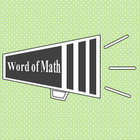
Quadrilaterals - The Family of Quadrilaterals: Special Parallelograms Quiz
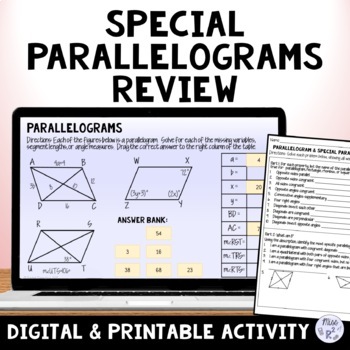
Parallelogram & Special Parallelograms Review Activity

SPECIAL PARALLELOGRAMS TASK CARDS: "GOOGLE FORMS, SLIDES", SMARTBOARD, POWERPOI
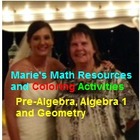
Geometry: Polygons, Parallelograms , Special Parallelograms

Special Parallelograms Puzzle Activity Printable + Google Slides

Properties of Special Parallelograms Activity - Print and Digital

Special Parallelograms Color by Numbers Worksheets

Special Parallelograms : Square, Rhombus, Rectangle - Practice Worksheets

Solving Special Parallelograms

Properties of Special Parallelograms Guided Notes: Square, Rectangle, Rhombus
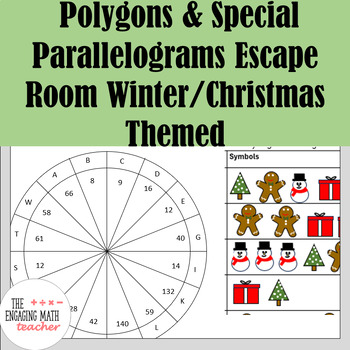
Polygon, Parallelogram and Special Parallelogram Escape Room Winter Edition

Properties of Special Parallelograms Circuit Practice Worksheet - Self-Checking

Special Parallelograms Maze Worksheets

Proving Special Parallelograms Activity - Print and Digital
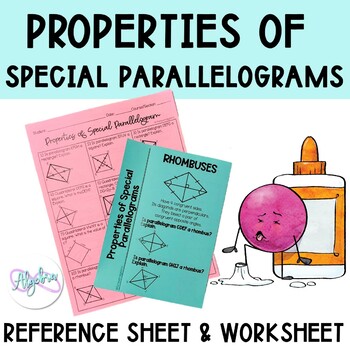
Properties of Squares, Rectangles and Rhombuses ( Special Parallelograms )

Special Parallelograms FUN Notes and Practice

Geometry Special Quadrilaterals and Parallelograms Practice Worksheet
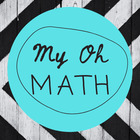
Special Parallelograms Geometry | PowerPoint Presentation Lesson | Middle School
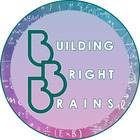
Proving Special Parallelograms Guided Notes
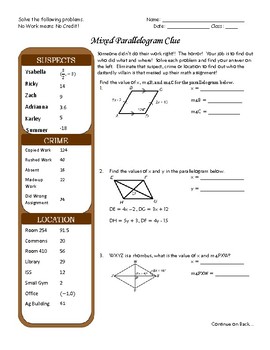
Special Parallelograms Clue Assignment

Properties of Special Parallelograms Partner Activity
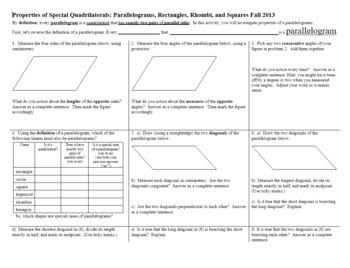
Properties of Special Quadrilaterals Parallelograms Rectangles Rhombi SquaresF13

- We're hiring
- Help & FAQ
- Privacy policy
- Student privacy
- Terms of service
- Tell us what you think

IMAGES
VIDEO
COMMENTS
Do you want to master the concepts of special parallelograms? Quizlet offers you a set of interactive flashcards that will help you learn and practice the properties of rectangles, rhombuses, and squares. You can also test your knowledge with quizzes and games. Join Quizlet and start studying special parallelograms today.
Study with Quizlet and memorize flashcards containing terms like The figure is a parallelogram. One diagonal measures 28 units. Is the figure a rectangle? Explain., A rectangle has a width of 9 units and a length of 40 units. What is the length of a diagonal?, What is the approximate side length of the square? and more.
Learn how to identify and solve problems involving special parallelograms , such as squares, rectangles, and rhombuses. Quizlet offers interactive flashcards with questions, diagrams, and answers to help you master geometry.
Quickly learn the properties of special parallelograms and use them to find missing side lengths and angles for rectangles, rhombi, and squares.
Special Parallelograms A parallelogram is a plane figure with two pairs of opposite sides. The opposite sides are parallel and equal, and the opposite angles are of equal measure. Parallelograms can be equilateral, equiangular, or both. There are three special types of parallelograms— rectangle, rhombus, and square. They are special because, in addition to the general properties of a ...
Free geometry lesson covering the special types of parallelograms, such as equilateral, equiangular, or both. Diagrams and examples for each type of parallelogram.
I can identify special quadrilaterals. I can explain how special parallelograms are related. I can fi nd missing measures of special parallelograms. I can identify special parallelograms in a coordinate plane.
A parallelogram is a quadrilateral in which the opposite sides are parallel and equal, and the opposite angles are of equal measure. Parallelograms can be equilateral (with all sides of equal length), equiangular (with all angles of equal measure), or, both equilateral and equiangular. Let us learn more about the three special parallelograms: rhombus, square, and rectangle along with their ...
Understanding Special Parallelograms in Geometry. In geometry, a parallelogram is a two-dimensional figure that has two sets of parallel sides and four right angles. While the basic definition of a parallelogram remains the same, there are many different types of special parallelograms that have additional properties and characteristics.
First, students take note that squares, rectangles, and rhombi must all have the parallelogram properties. This ties together ideas from Lessons 5.1 and 5.2.
Study with Quizlet and memorize flashcards containing terms like What are the remaining angle measures if the figure is to be a parallelogram? m∠B = __° m∠C ...
Use properties of diagonals of special parallelograms. Use coordinate geometry to identify special types of parallelograms. Using Properties of Special Parallelograms In this lesson, you will learn about three special types of parallelograms: rhombuses, rectangles, and squares. Core Concept Rhombuses, Rectangles, and Squares
A parallelogram with a pair of consecutive congruent sides and a pair of acute angles. c. A parallelogram with a right angle. Prove that if a parallelogram is a rhombus, then its diagonals are angle bisectors of a pair of opposite angles. Worksheet: 8.03 Special parallelograms. Mathspace is an all-in-one learning resource, wherever you are.
Properties of Special Parallelograms. If it is true that not all quadrilaterals are created equal, the same may be said about parallelograms. You can even out the sides or stick in a right angle. A rectangle is a quadrilateral with all right angles.
Notes 6-4: Properties of Special Parallelograms Objective: 1. Prove and apply properties of rectangles, rhombuses, and squares 2. Use properties of rectangles, rhombuses and squares to solve problems.
Section 6.4 - Special parallelograms quiz for 10th grade students. Find other quizzes for Mathematics and more on Quizizz for free!
Study with Quizlet and memorize flashcards containing terms like A. The diagonals are congruent. B. The diagonals bisect each other. C. The diagonals are perpendicular. D. Each of the diagonals bisects both angles., A. 5 B. 10 C. 15 D. 20, A. 5 B. 15 C. 30 D. 45 and more.
Special Parallelograms Practice quiz for 8th grade students. Find other quizzes for Mathematics and more on Quizizz for free!
Assignment 7.4 - Special Parallelograms quiz for 9th grade students. Find other quizzes for Mathematics and more on Quizizz for free!
Study with Quizlet and memorize flashcards containing terms like Definition of a rectangle, Definition of a rhombus, Definition of a square and more.
Properties of Special Parallelograms Notes, Assignment and Quiz Bundle This is a bundle of three of my Special Parallelogram Notes and Assignment sets and my Properties of Special Parallelograms Quiz. You can purchase them separately at: Properties of Parallelograms Notes and Assignment. Properties of Rectangles Notes and Assignment .
Students also viewed Special Parallelograms Teacher 14 terms brenda_mendoza51 Preview Parallelograms Assignment and Quiz 19 terms Taelor_Morton Preview Trapezoids and Kites 15 terms Karthi_Ramiah Preview Central Angles Assignment 10 terms HaileyC771 Preview Special Parallelograms 10 terms anonymous1933 Preview Fiber Optic Cabling 16 terms ...
Properties of Special Parallelograms. square is a parallelogram with four congruent sides and four right angles The diagonals of a rhombus are perpendicular. Each diagonal of a rhombus bisects a pair of opposite angles. The diagonals of a rectangle are congruent.